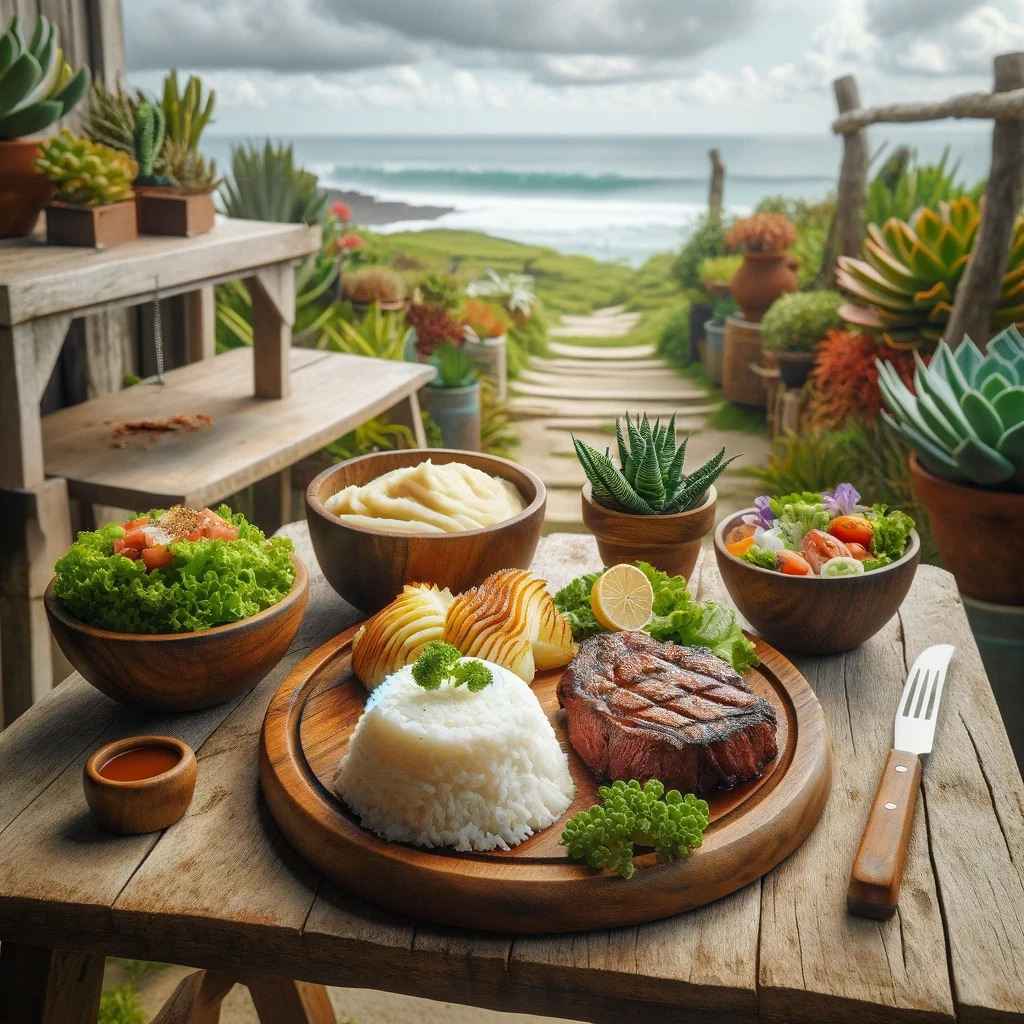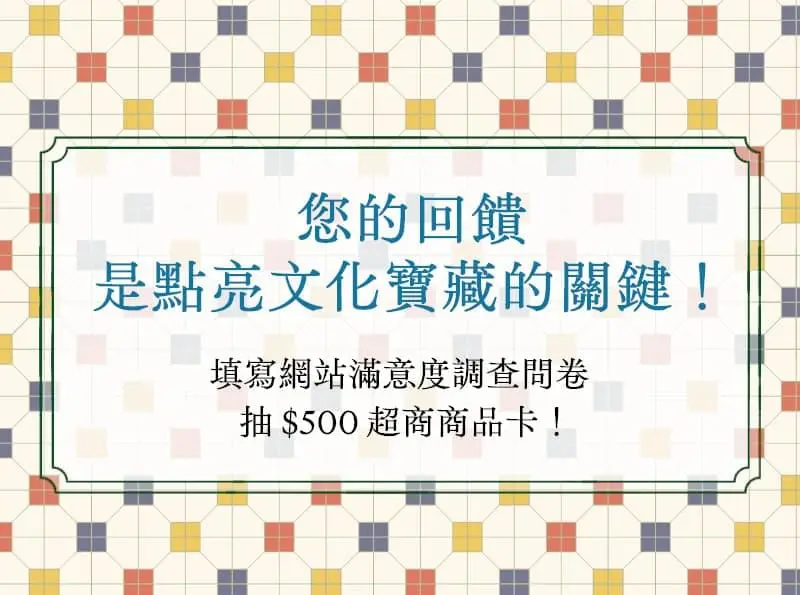首先將削皮切塊的馬鈴薯丟入煮滾的熱水中,並在水中加入一點鹽巴(防止脹氣),燜煮20-30分鐘,待馬鈴薯熟透後將其撈起瀝乾,趁熱騰騰的時候加入適量的奶油、鹽巴,以利他們融在馬鈴薯中,同時開始拌攪,壓碎,壓到變成泥狀,再加入牛奶,為薯泥增加綿密及濕潤度。我們家的馬鈴薯泥非常特別,它會配著白飯及牛排一起吃,因為爸爸喜歡吃牛排、妹妹喜歡白飯,而我喜歡馬鈴薯泥。在我協助製作馬鈴薯泥的同時,媽媽會開始煎牛排,待牛排後熟,變可以將牛排切塊,配著馬鈴薯泥+白飯一起吃。因為家人們因為不同的飲食喜好而在餐桌上產生出的奇妙組合,是一道全家人聚在一起吃飯才可能會出現的菜色,牛肉的肉汁加上馬鈴薯的綿密口感,再加上看似平凡的白飯,除了味覺和口感上的衝擊外,更多的是媽媽想要滿足大家喜好的愛,當然媽媽有時也會在這個組合裡加入她自己喜歡吃的沙拉啦。
In my memory, the first dish I helped with in the kitchen as a child was mashed potatoes. The flavor of the dish is determined right from the selection of the potatoes. Imported small, smooth-skinned potatoes lack the necessary flavor; it must be the rough-skinned variety grown in Taiwan.
First, peeled and chopped potatoes are tossed into boiling water, with a pinch of salt added to prevent bloating. After simmering for 20-30 minutes until the potatoes are thoroughly cooked, they are drained and, while still hot, mixed with a suitable amount of butter and salt to help them blend into the potatoes. The potatoes are then mashed until they become smooth, and milk is added to enhance the creaminess and moisture of the mash.
Our family's mashed potatoes are unique because they are eaten with white rice and steak. My dad loves steak, my sister loves rice, and I love mashed potatoes. While I help prepare the mashed potatoes, my mom starts cooking the steak. Once the steak is rested, it is sliced and served with mashed potatoes and rice.
This unusual combination, resulting from the different preferences of each family member, is a dish that only appears when the whole family gathers for a meal. The meat juices from the steak combined with the creamy texture of the mashed potatoes, and the seemingly ordinary white rice, create a delightful clash of flavors and textures. Beyond the culinary experience, this dish embodies my mom's love and her desire to cater to everyone's tastes. Of course, my mom sometimes adds her favorite salad to this mix.
-
《島嶼未來料理教室》Future Formosa Culinary Lab Profile Nr.044
22-30歲的屏東市喜歡甜的,不喜歡咖啡。討厭芋頭更討厭芋頭煮在火鍋裡。要先吃完鹹的才能吃甜的(有時候有例外)者,平均花費200-300元在餐費上。因為「阿嬤做的高麗菜飯,因為是阿嬤的拿手菜,她知道我喜歡吃,所以幾乎每次去阿嬤家吃飯都會有高麗菜飯。正所謂阿嬤覺得你喜歡,他就會一直一直一直煮給你吃」而對飲食記憶留下深刻印象。如果世界末日終將來到,會選擇身邊是誰就跟誰共享這一餐。關於家庭的一道料理,她提到披薩跟義大利麵。
"No coffee, hates taro in hot pot, savory before sweet"
Female(22-30 yrs)/ Pingtung County / 200-300 NTD per meal
Profound dining impressions were shaped by her grandmother's signature cabbage rice. Her grandmother knew she loved it and would cook it almost every time she visited. The saying goes, "If grandma thinks you like it, she will keep making it for you."
If the end of the world were to come, she would choose to share the meal with whoever is by her side.
As for a family dish, she mentioned pizza and pasta.
-
國立臺灣歷史博物館的第 1 個「公共飲食記憶 NFT 化」實驗計畫《超時空島嶼餐桌》
National Museum of Taiwan History's First NFT Experimental Project on Public Dining Memories《Time-Space Dining Tables》
「國立臺灣歷史博物館」為推動國家文化記憶庫之永續發展,融入當代議題、常民生活及在地關懷,連結博物館專業、數位創新思維與多元社群行動,以促進臺灣原生文化之活化運用,鼓勵全民共同開展記憶庫多元主題與主題素材近用。
本計畫案於112年推出《島嶼庫客 Islands Cooker》飲食記憶系列7支影片,探究臺灣飲食的歷史成因,113年延續「餐桌」的概念,加入「未來」元素,委由畸零地創造股份有限公司辦理《島嶼未來料理教室——NFT設計工作坊》,以記憶庫長期深耕之飲食記憶主題,透過非同質化代幣(Non-Fungible Token,以下簡稱 NFT)設計工作坊,增進記憶庫之內容與應用,落實臺灣原生文化之推廣。
《島嶼未來料理教室——NFT設計工作坊》以「推測設計」為核心,反思記憶料理的獨特性,其之於 NFT的當代意義及其飲食文化價值,並將工作坊延伸設計為「發掘身體飲食記憶,運用想像和推測來創造未來島嶼飲食文化」的參與式體驗活動。工作坊由編舞家與引導師,透過一連串的帶領、想像和對話,挖掘及連結蘊藏身體感知中的飲食記憶,並讓參與者書寫飲食記憶;接著由畸零地工作室與生成式AI 「ChatGPT 4o」協作製作出 「記憶食譜 NFT」及文字翻譯;最後線上場以「圍爐」的概念,讓參與者在雲端上互相分享與交流。
這些飲食記憶透過NFT不可替代、數位交換的特性,被永久保存並流傳,期望每個人都能回首屬於自己的飲食記憶和歷史,經由公共化的途徑與媒介,成為社會記憶的一部份,構築社群認同的可能。
To promote the sustainable development of the Taiwan Cultural Memory Bank, the National Museum of Taiwan History integrates contemporary issues, ordinary life, and local concerns. By combining museum expertise, digital innovation, and diverse community actions, it aims to revitalize and utilize Taiwan's indigenous culture. The museum encourages the public to collaboratively develop and access various themes and materials within the memory bank.
This project launched the "Islands Cooker" series of seven videos on culinary memories in 2023, exploring the historical origins of Taiwanese cuisine. Continuing with the concept of the "dining table" and incorporating "future" elements in 2024, the project entrusted Ground Zero Co., Ltd. to handle the "Islands Future Cuisine Classroom—NFT Design Workshop." By delving into the long-term themes of culinary memories from the Taiwan Cultural Memory Bank and utilizing the Non-Fungible Token (NFT) design workshop, the project aims to enhance the content and application of the memory bank, promoting the dissemination of Taiwan's indigenous culture.
The "Islands Future Cuisine Classroom—NFT Design Workshop" centers on "speculative design," reflecting on the uniqueness of memory cuisine and its contemporary significance and culinary cultural value in relation to NFTs. The workshop is extended into a participatory experiential activity, designed as "discovering culinary memories in body and using imagination and speculation to create future island culinary culture." The workshop, led by choreographers and facilitators, guides participants through a series of activities, including imagination and dialogue, to uncover and connect with culinary memories embedded in their bodily perceptions. Participants then write down their culinary memories. Next, Ground Zero Co., Ltd. collaborates with the generative AI "ChatGPT 4o" to create "Memory Recipe NFTs" and translate the texts. Finally, the online session, based on the concept of "reunion dinner," allows participants to share and exchange their experiences and creations in the cloud.
These culinary memories, preserved and circulated through the non-fungible and digital exchange characteristics of NFTs, are expected to be permanently stored and shared. The goal is for everyone to reflect on their own culinary memories and histories, making them part of societal memory through public pathways and media, thereby fostering a sense of community identity.
※本圖像為AI生成內容
※This image is AI-generated content.












